Did you miss the first part of this post? You can catch up here.
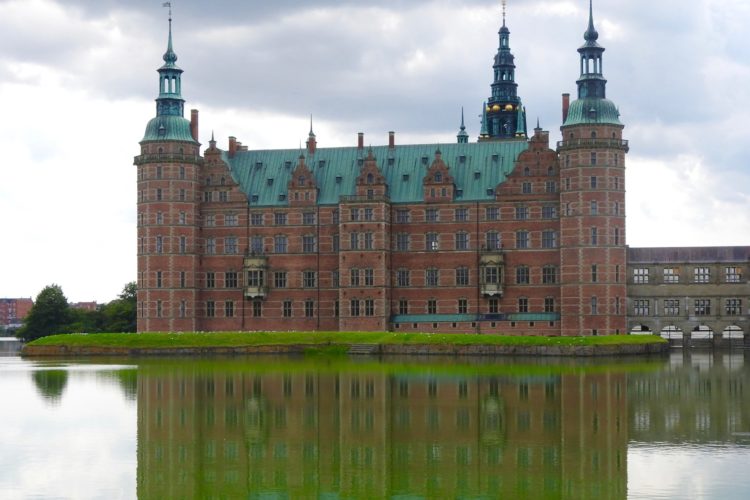
Denmark’s “Nordic Versailles”: A visit to Frederiksborg Castle.
When most people (well, most North Americans) think of the grand palaces and castles of Europe, they usually think of Versailles or Buckingham Palace. Maybe, if they remember when Grace Kelly married her prince or when Princess Caroline was on the cover of every glossy magazine in the western world, they think of the pink stone palace in Monaco too.
But Europe, home to so many monarchies and former monarchies, has dozens of castles and palaces with royal associations. Some are surprisingly modest and others are awe-inspiring in their design and lavishness.
Put Frederiksborg Castle, outside of Copenhagen, in the latter category.
Indeed, Frederiksborg bills itself as the “Nordic Versailles” (though I would argue that it has some stiff competition from Sweden’s Drottningholm–about which I really need to write one of these days). Built, in the Renaissance style, in the first half of the seventeenth century, it has a fairy tale look–all red brick, towering spires, and gables. If not as forbidding as the castles of the medieval era (think England’s Windsor Castle), it is most definitely imposing. The gardens, which were laid out more than a century later, are in the Baroque style and are fronted by the castle lake.
However imposing, Frederiksborg came on the scene too late to be a fortress. By the seventeenth century, the era of castles as defensive strongholds was well past, made obsolete by the canon. Frederiksborg, with its bay windows and lack of a castle wall, has much in common with the beautiful chateaux of the Loire Valley and was built for pleasure and for show. Though when, in 1659, during one of Denmark’s frequent wars with Sweden, it was captured by enemy forces, looted, and used as a hunting lodge, the then king, Frederik III, might have wished his predecessors had picked a more old-fashioned design.
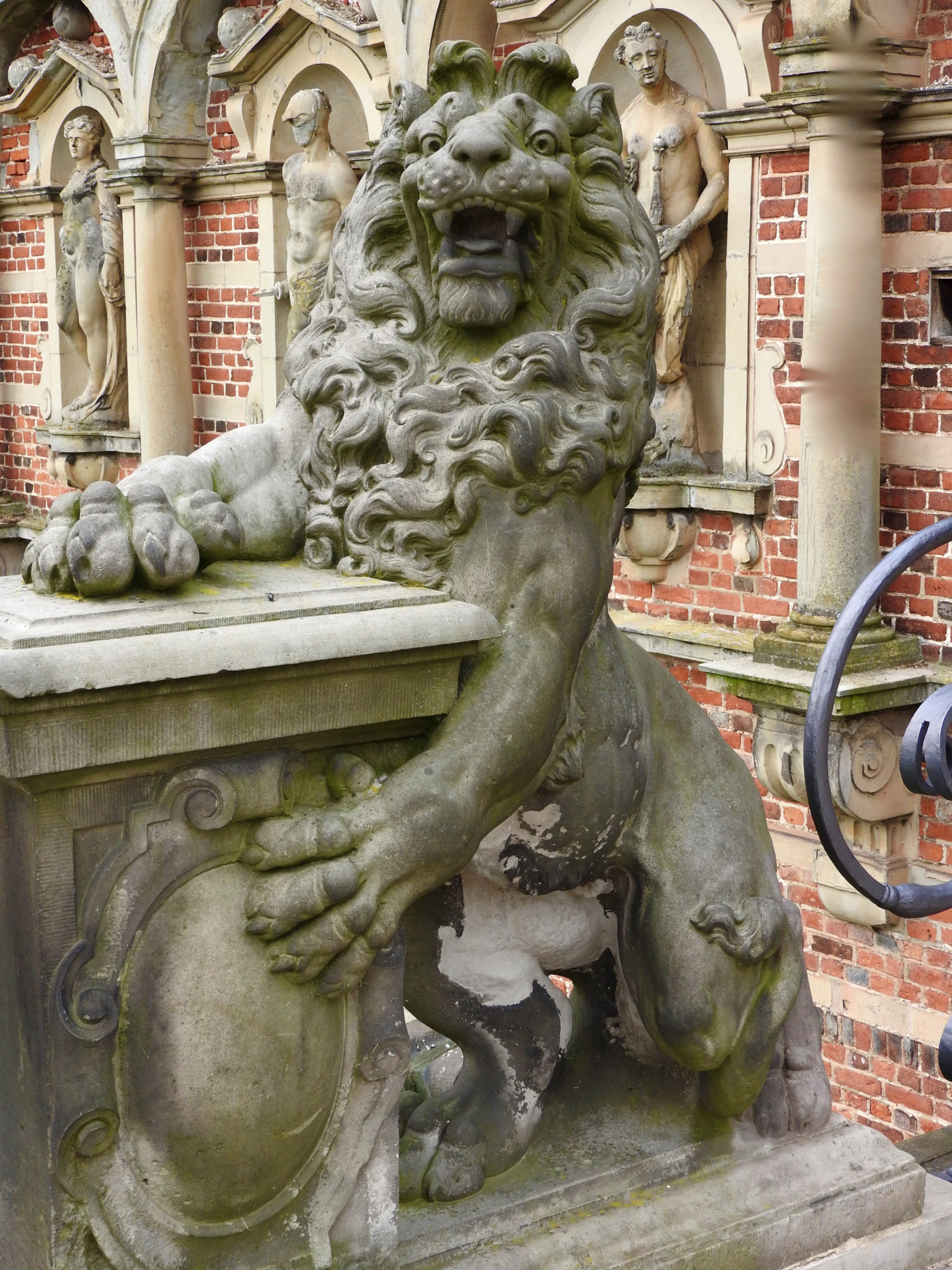
Another way that you can tell that Frederiksborg was not built with military defense in mind? This lion, one of a pair guarding the entrance, is just too friendly-looking. (Okay, that theory might not be so historically sound…)

The castle interiors range in style from late Renaissance through the neoclassical late eighteenth and early nineteenth centuries. This room’s furnishings are reminiscent of the seventeenth century, and this what that the castle might have looked like when the enemy Swedes (temporarily) occupied it.
The castle as it appears now is largely the handiwork of one of Denmark’s most popular kings, Christian IV (r. 1588-1648). However, his descendants were less enthusiastic, using it mainly for ceremonial occasions (maybe they remembered its less glorious past as one of the spoils of war?). But another king, Frederik VII, did happen to be in residence on the night of December 16, 1859, when a fire broke out in a damaged chimney and spread rapidly through most of the castle.
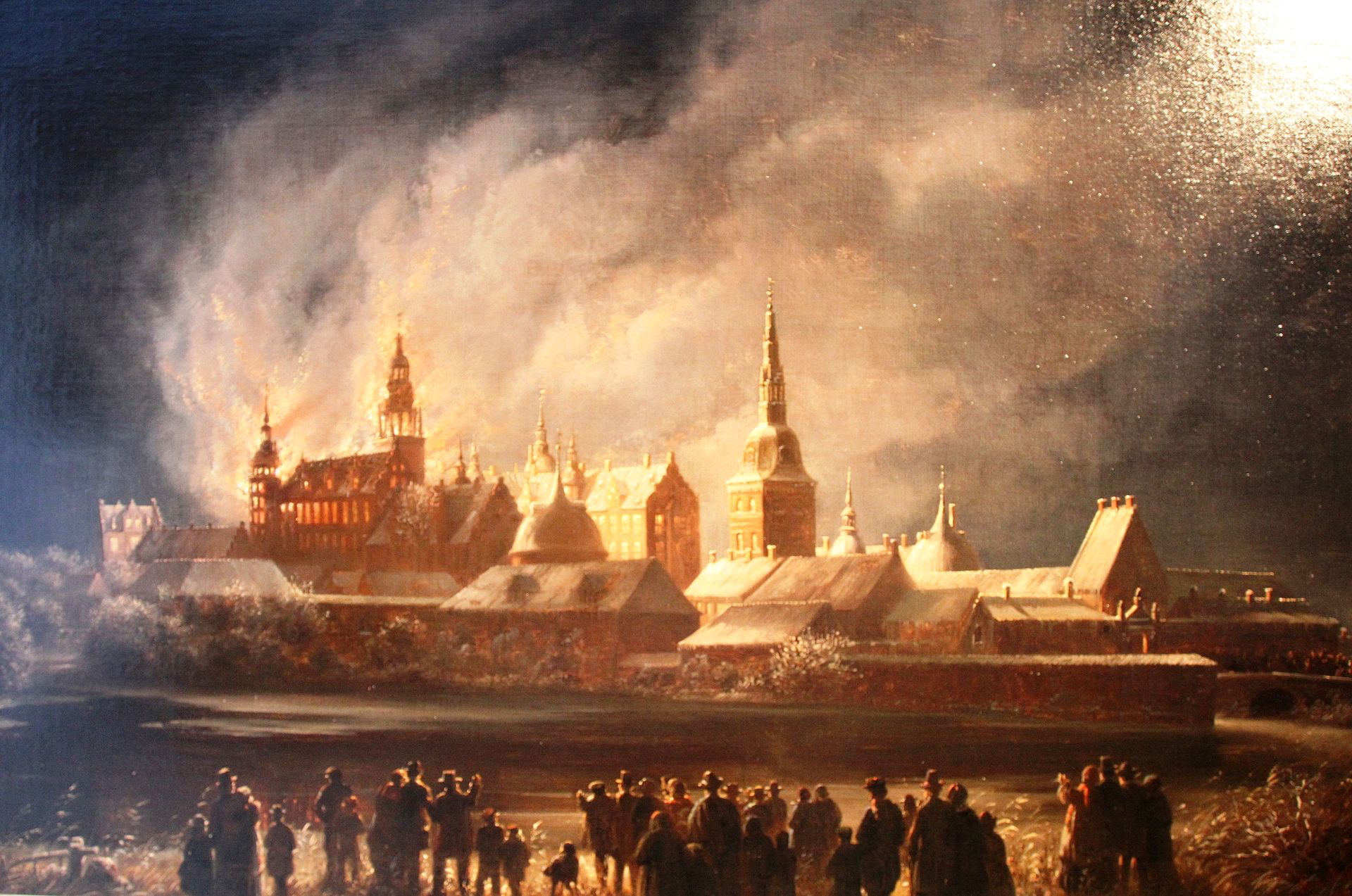
Frederiksborg Castle in Flames; painting by Ferdinand Richardt. [CC BY-SA 3.0]
The interior was largely destroyed, but the distinctive Renaissance-style castle was considered so important a part of the Danish cultural heritage, that public subscription campaigns and affluent donors quickly raised the funds to begin restoration. The project took on added importance in the mid-1860s as the Danes reeled from the loss of roughly one-third of their territory to Prussia in the Second Schleswig War. Leaders of the restoration project hoped that restoring the castle to its former grandeur would serve as both balm and encouragement to Danish national pride.
A particularly enthusiastic supporter of the project was J.C. Jacobsen, a founder of the Carlsberg Brewery. It was apparently at his suggestion that the restored castle was reinvented as a home for the National History Museum. (Appropriately enough, the restaurant right next to the castle sells Carlsberg beer, along with some seriously tasty salmon).
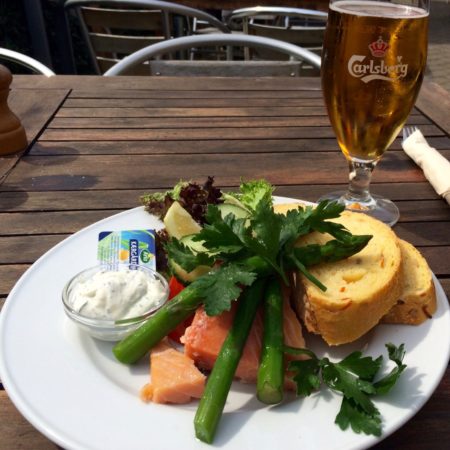
The nearby restaurant, Spisestedet Leonora, offers simple, yummy food and cold beer. And if the weather’s nice, the outdoor seating is lovely. But, I have never had such slow, indifferent service. I really think my server forgot about me and went home.
The museum is tells the story of Denmark through history paintings, formal portraits, furniture, decorative arts, and the odd scientific instrument–some of which are decidedly fun and quirky
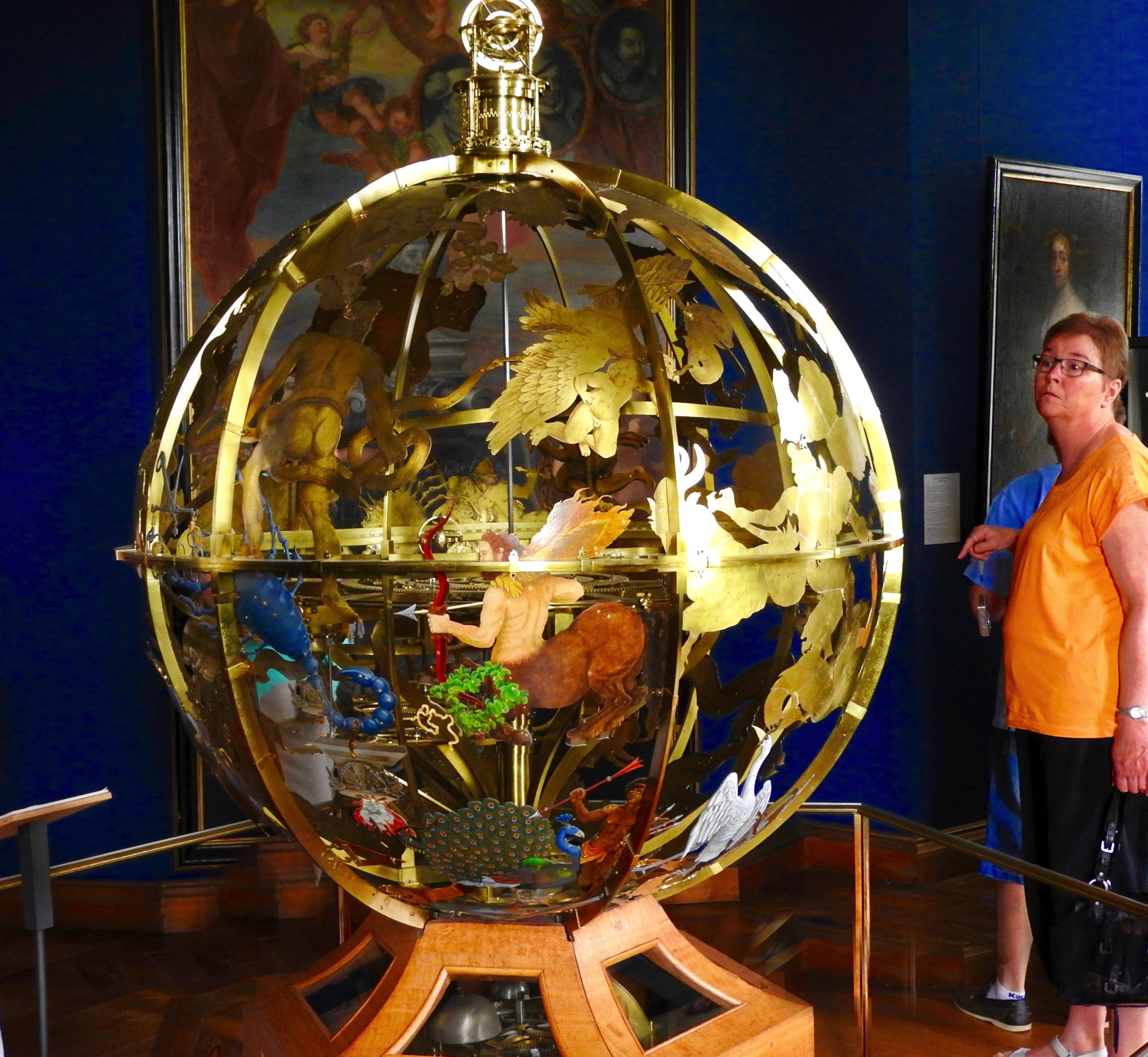
This lady was as impressed as I was with this multi-colored, Zodiac signs-bedecked armillary sphere.
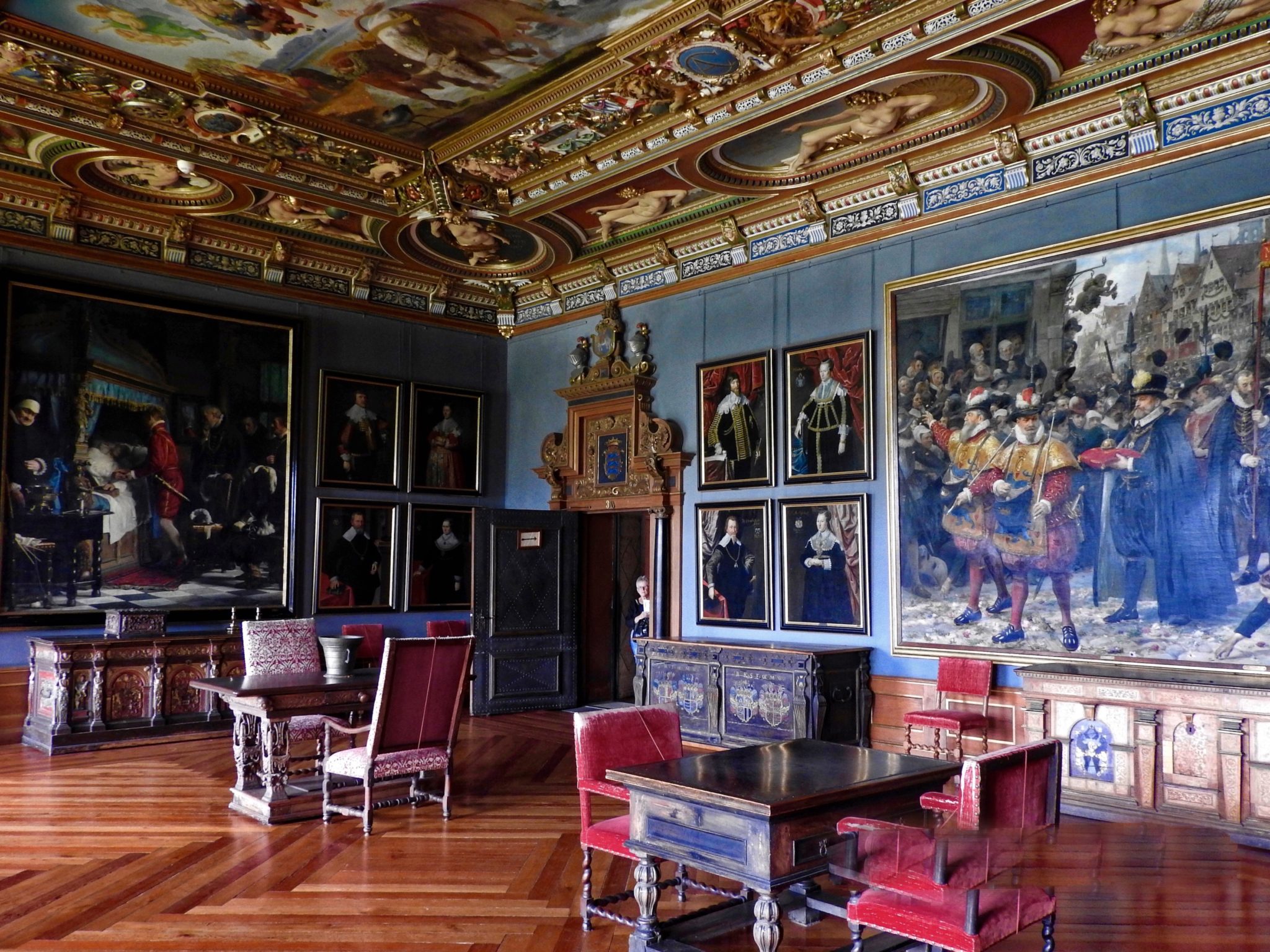
I didn’t catch the name of this room, but I think it’s reasonable to dub it the “Christian IV room.” The two history paintings show Christian at two key moments in his early reign. On the left, the teenaged Christian (who inherited the throne at age 11 and thus had a regent) receiving the keys to the royal vault. On the right, part of a painting depicting Christian’s 1596 coronation.
I did do a bit of a double take at the statue of Icelandic poet and politician Snorri Sturluson (1179-1241). In the last years of the medieval Icelandic state, Snorri, a powerful chieftain, acted as an agent for the Norwegian king and supported Iceland’s union with Norway (which would put an end to the independent commonwealth and place Iceland under monarchical rule).
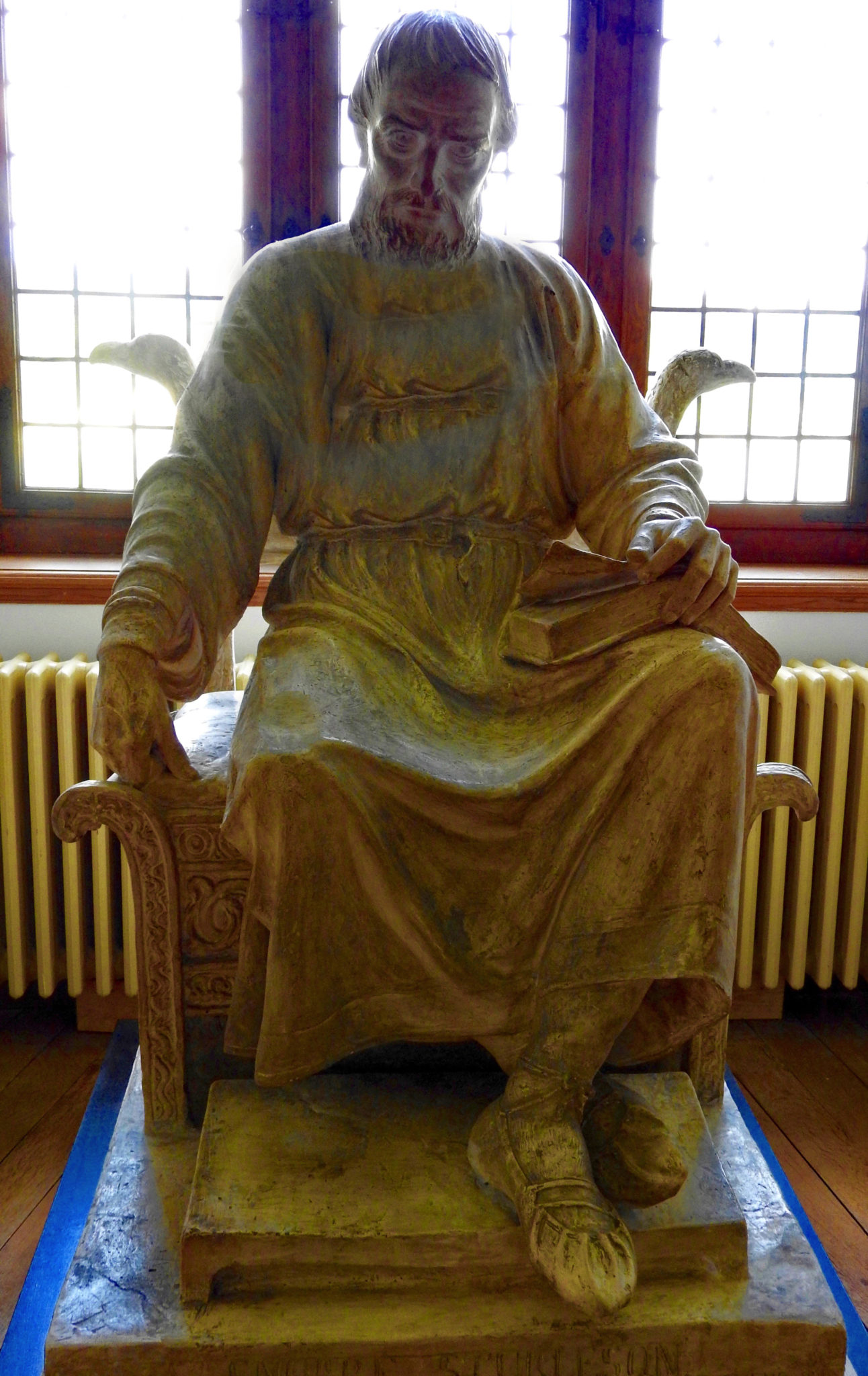
Snorri looks a little perplexed to be there, too.
The Norway-Iceland union eventually came about, though Snorri, who was assassinated by political enemies, didn’t live to see it. And as a Norwegian territory, Iceland did come into union with Denmark in the late middle ages, but associating Snorri with Denmark–to the point of putting his statue in the National History Museum–seems like kind of a stretch. Sort of like putting a bust of William Wallace in an English history museum, on the grounds that Scotland–whose independence Wallace died (gruesomely) for–was eventually united with England.
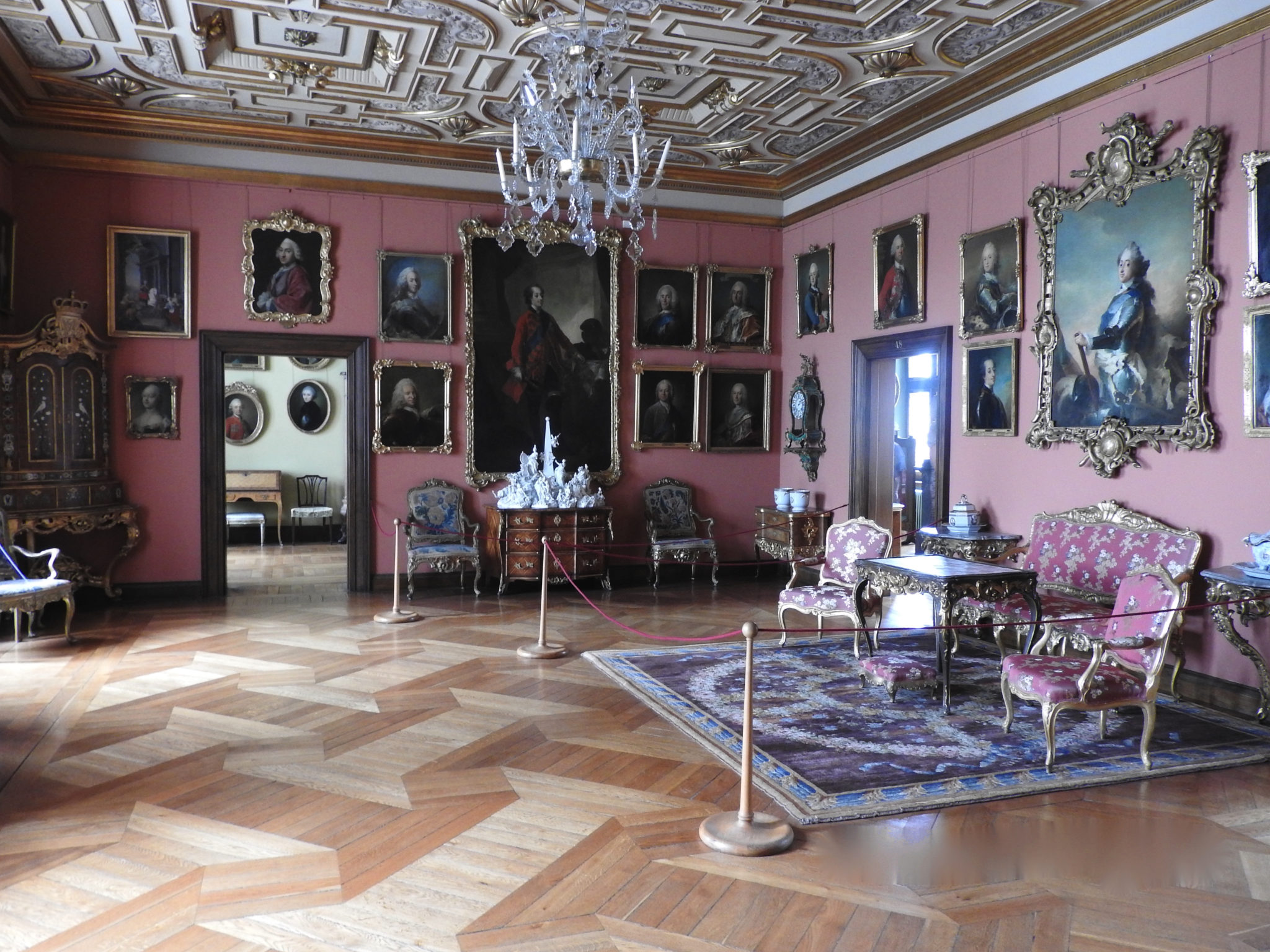
This truly palatial pink room is, apparently, really called “The Pink Room.”
Along with its permanent collection, which tells the story of Denmark through paintings and decorative arts, the museum also has revolving exhibitions and I was lucky enough to see exhibit marking Queen Margarethe II’s 75th birthday. Titled “A Costume Cavalcade,” it displays some of the more memorable outfits the queen has worn over the years. Interspersed with the clothing were multimedia exhibits highlighting key points from the queen’s early life and reign.
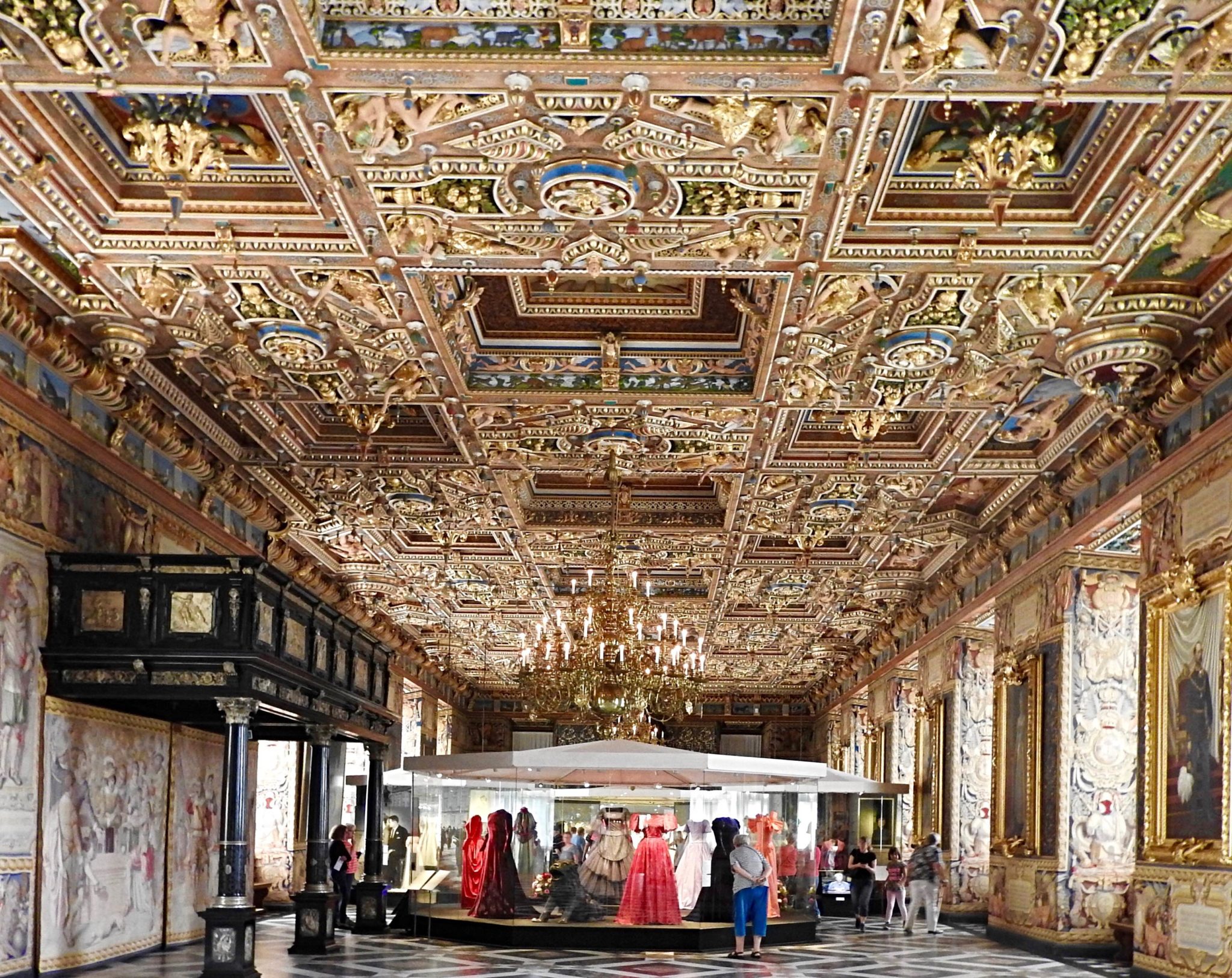
The collection of Queen Margarethe II’s gowns is really impressive, but inevitably upstaged by the hall’s stunning ceiling. I wish I had braved the stares and got down on the floor for the perfect shot.
Among the lavish gowns and brightly-colored daywear (the queen is known for her sparkling personality and flamboyant taste), the simple pieces really stand out. Her wedding dress, from 1967, is restrained and timelessly elegant (if I ever get married, I’m totally copying that square neckline). Also on display is the formal black gown and veil she wore when she was proclaimed queen after the the sudden death of her father; right next to the mourning gown is a screen playing footage from that day. After walking around all the vivid colors, the image of the severely-dressed young woman, aged only 31, visibly choking back tears, is very poignant.
The museum occupies about 80 castle rooms, so it is easy to get a bit overwhelmed. There are only a limited number of audio guides available. A podcast of the tour is available to download, but I found the castle’s wifi not up to the job. I still really enjoyed my visit, but it definitely helped that I already had a grasp of at least the outlines of Danish history.
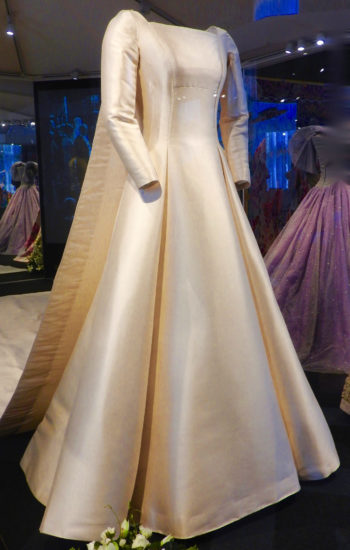
I am crazy about this dress! What do you think?
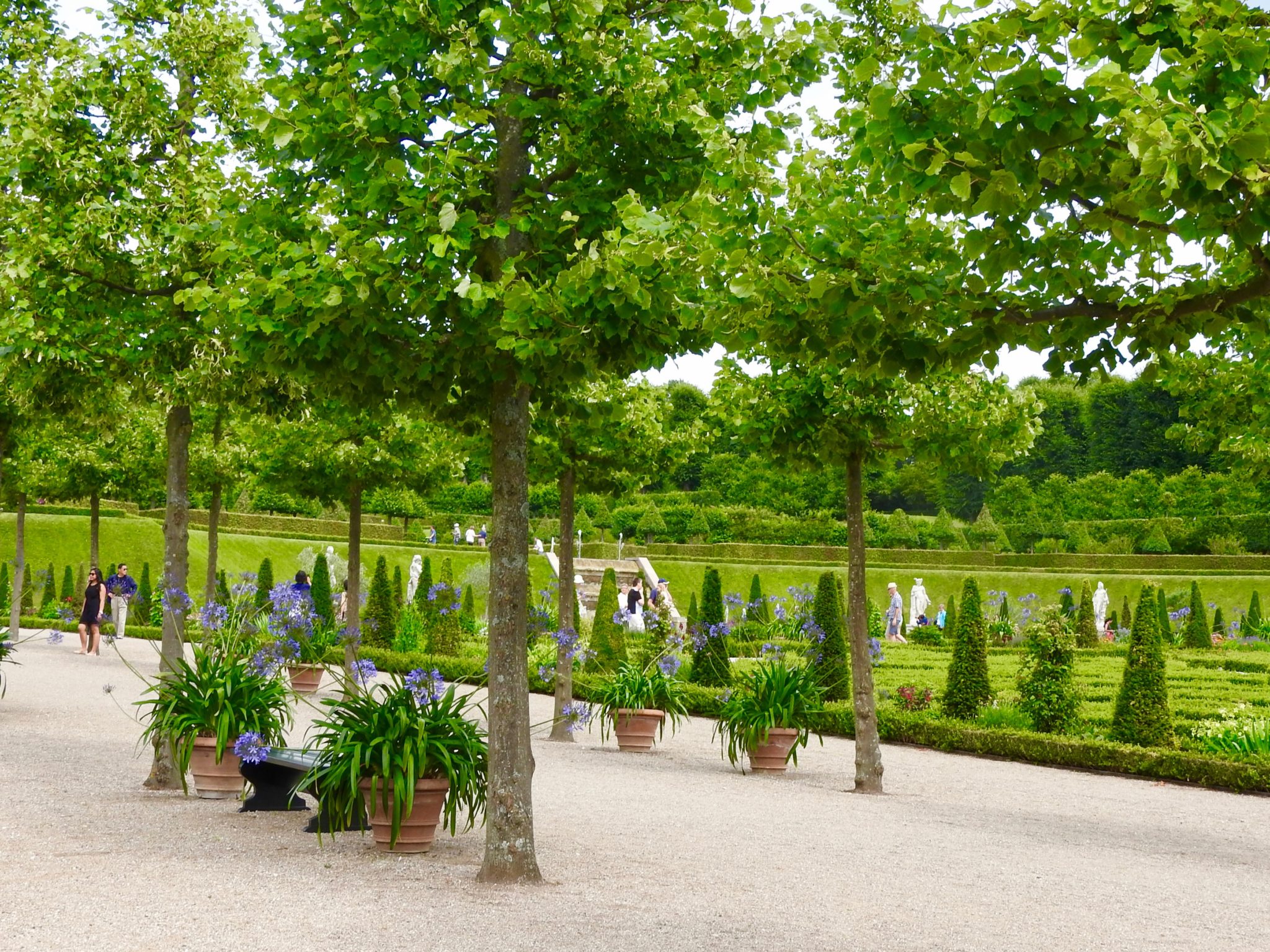
One view of the extensive, but I thought, for a castle, surprisingly informal gardens
Frederiksborg has one more surprise up its sleeve for the history-oriented visitor: a series of frescos on the walls of an otherwise nondescript ground-floor walkway. The paintings, which tell the story of the eleventh-century Danish conquest of England, are a sort of Danish “Bayeux Tapestry,” and were indeed apparently commissioned to complement the museum’s painted copy of the tapestry. (The Bayeux Tapestry was an object of particular fascination among northern Europeans in the late nineteenth-century, but the Danes, unlike later Tapestry fanatics, borrowed the idea of commemorate an actual historic victory of their own, and not to co-opt somebody’s else’s.)
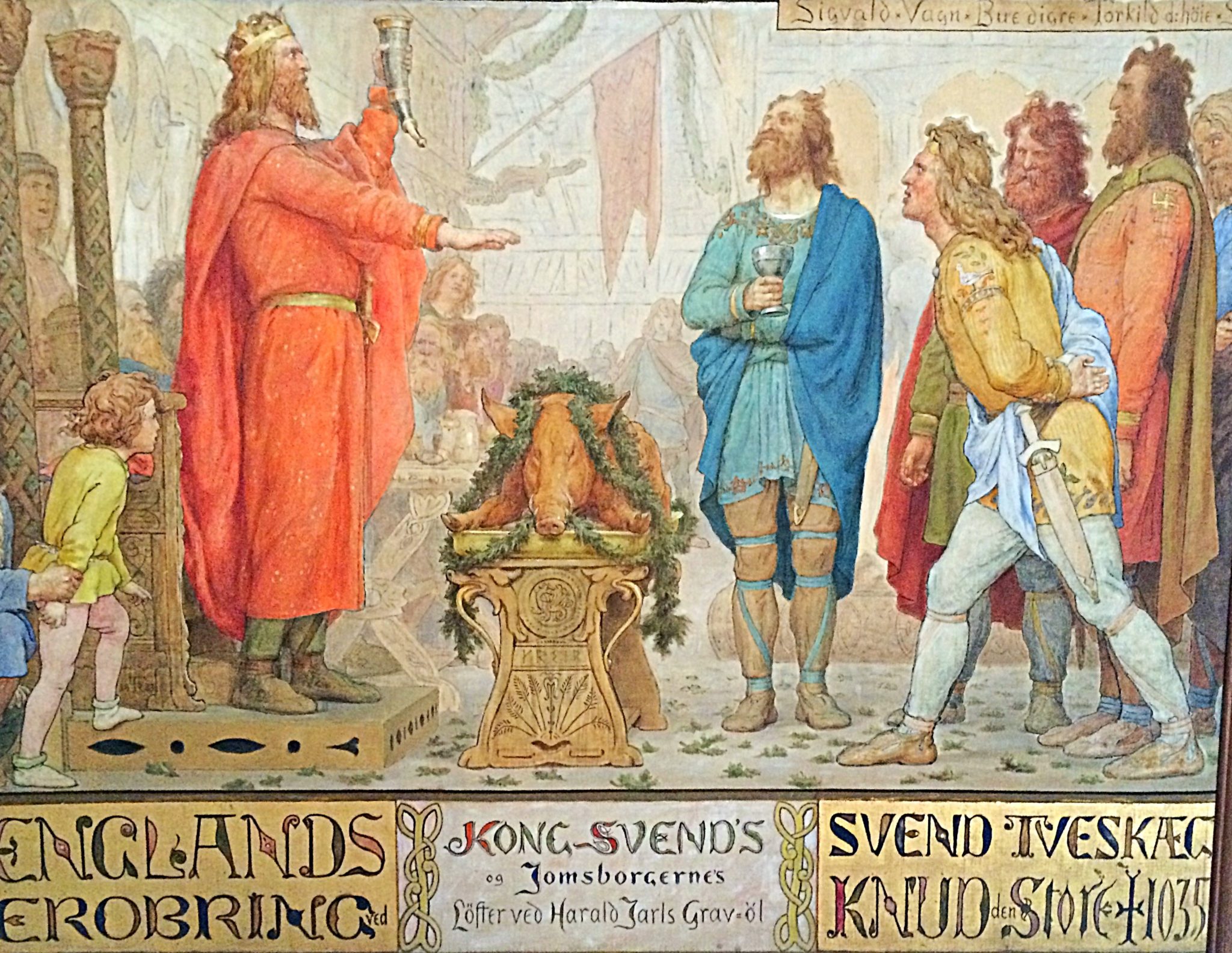
The painter, Lorens Frölich, was apparently widely-enough known that his death notice was printed in 1908 editions of the Athenaeum and The Nation, but so far I’ve been unable to turn up much more in English-language sources. If any Danish readers or art historians know more about this, I’d love to hear it!
As much as I enjoyed my visit, and certainly recommend visiting Frederiksborg, I wouldn’t put it on a “must-see” list of Copenhagen sites, unless you are very into Danish history, royal history, decorative arts, or just really dig castles (in that case you will be very happy). Especially if you’re short on time, the National Museum of Denmark (literally millennia of natural history and material culture), Rosenborg Castle (gorgeous gardens and the crown jewels), or Amalienborg Palace (royal paraphernalia galore!), all of which are actually in Copenhagen proper, are worthy substitutes.
Getting to Frederiksborg Castle
The castle and garden are open to visitors 365 days a year, though the hours change with the season. Check the museum website, http://www.dnm.dk/UK/Forside.htm before starting out.
- From Copenhagen, take the S-tog (suburban commuter rail) purple line “E” to Hillerød (the last stop). You can get the S-tog at numerous stops throughout the city. I got on at Nørreport and the ride took about 30 minutes.
- From the train station you can either walk about 20 minutes to the castle or take bus # 301 or 302. The bus–which stops at the train station–is free if you show your S-tog ticket or have the Copenhagen Card. If you’re unsure about which bus to take, just as the driver. English is widely spoken in Denmark and Danes are very helpful.
- Take the bus to the “Frederiksborg” stop. You won’t miss it. It’s the one with the castle.
- Admission, as of Winter 2017, is 75 DK for adults, or about 10.50 USD.
Have you been to Frederiksborg? How does it stack up against other castles?

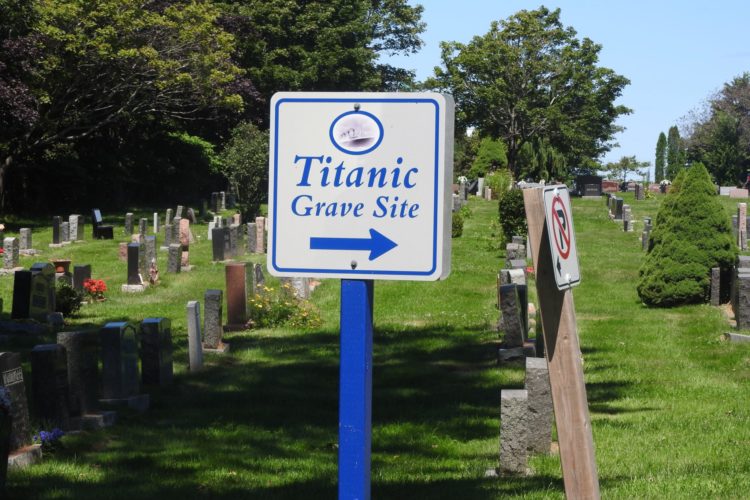
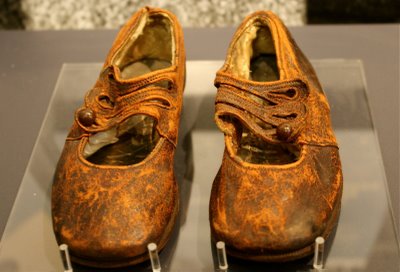
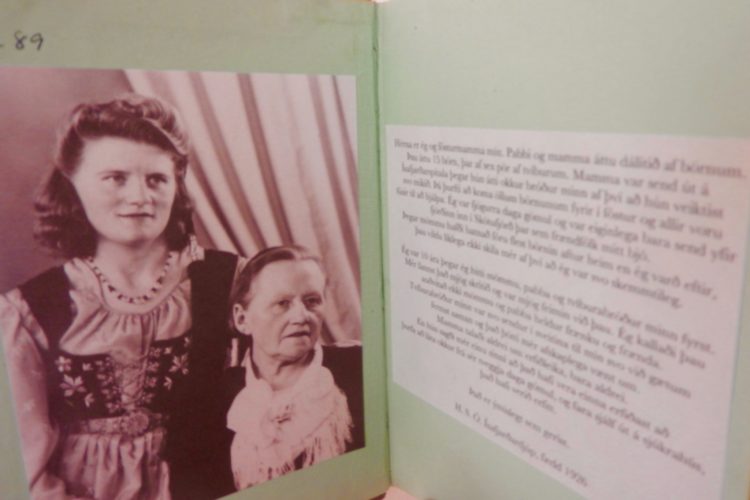
Comments (0)